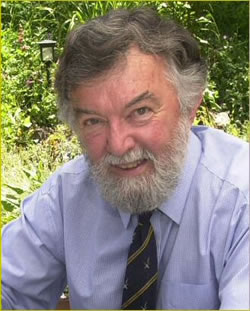In Praise Of Statistics
Dave Wilson |
In Praise of Statistics
The recent passing of Bill Frindall, or “Bearders” as he was affectionately known, was greeted with mixed emotions by a statistics lover such as myself. While Bearders was the acknowledged guru of cricket statistics, his chosen field of expertise is not in general given a great deal of credence among cricket fans. How many times did Bearders groan when he saw something like “Mere numbers cannot do justice to his cricket”, after seeing reams of those very numbers being used to illustrate how great said cricketer was?!
Every cricket fan, throughout the years, has identified with statistics in a different way. Like it or not, cricket is a game based on statistics and the two are inseparable. And a glance at any Wisden will confirm that they always have been. Page after page of scorecards and averages assail the senses. We can all read a game summary, but this will give us only highlights and is thus incomplete. The unfolding of the game can only be totally followed from the scorecard, wherein every detail of the game can be found. What better way is there for an ex-patriot Durham fan like myself to get a feel for say, Hampshire’s performance in last year’s (or any other year’s, for that matter) county championship than by looking at their team averages, assessing their strengths and weaknesses from the assorted numbers therein, without having seen them play?
But, while I shall always hold Wisden in the highest regard, I always preferred Bearders’ baby, “The Playfair Cricket Annual”, unencumbered as it was by prose, just numbers, numbers and more numbers. And with the passage of time, many of these numbers have taken on a life of their own – who among us does not recognise the significance of 99.94? Or 400? Or 19-90?
Reading Michael Simkins’ “Fatty Batter” brought home to me that I wasn’t in fact the only kid who enjoyed creating whole seasons of fictitious county cricket with nothing more than two hexagonal pieces of metal, a pencil and paper, and a packet of Fruit Spangles. Numbers, numbers and more numbers.
We cricket statisticians study these numbers like astronomers study the night sky, looking not to know more trivia than the next man, but to understand the game better. Even now, at 51 not out, I continue my search for the Grand Unifying Theory of cricket (see
The main reason that statistics are berated so much in cricketing circles, I feel, is because too many people use statistics arbitrarily – statistics should be used as a blind man uses a lamp post, for support rather than illumination. Too often statistics are used to try and prove something which just isn’t there and therefore isn’t true. But numbers do allow us, when appropriately analyzed, to be objective and impartial – as Lord Kelvin said, “When you can’t express it in numbers, your knowledge is of a meager and unsatisfactory kind.”
Another reason some cricket fans shy away from statistics is that they see how immersion in them can be overdone – I refer to what Matthew Engel called the “corporate beanfeast”, baseball. Baseball was born the illegitimate child of cricket and rounders, and as it grew began to look less and less like its parents. In a strange way though, cricket has began to look more like baseball, with the advent of Twenty20, and the use of terms like “pinch-hitter”.
But how many cricket fans are aware that the father of baseball statistics, one Henry Chadwick, was an Englishman and a cricket reporter? Like baseball, cricket statistics continue to grow, with strike rate and economy rate joining the traditional averages to better illustrate performance in the modern game. The point is, I doubt that cricket will ever rival baseball in terms of statistical analysis.
The love of cricket statistics has thus almost been a guilty pleasure for those of us who delight in such things. Even the Association of Cricket Statisticians and Historians (ACS) seems to have been swayed by popular opinion, as a significant proportion of its output leans towards the silent “H” in its acronym rather than the more prominent “S”.
So lets be thankful for Bearders and his like, who tirelessly record every ball and incident of a match to enable the rest of us to try and understand the game better.
RIP Bill Frindall (1939-2009)





Leave a comment